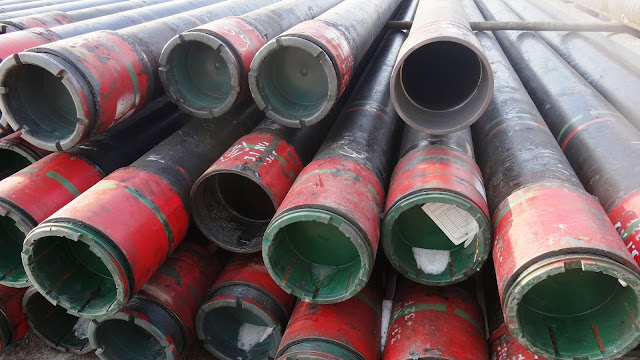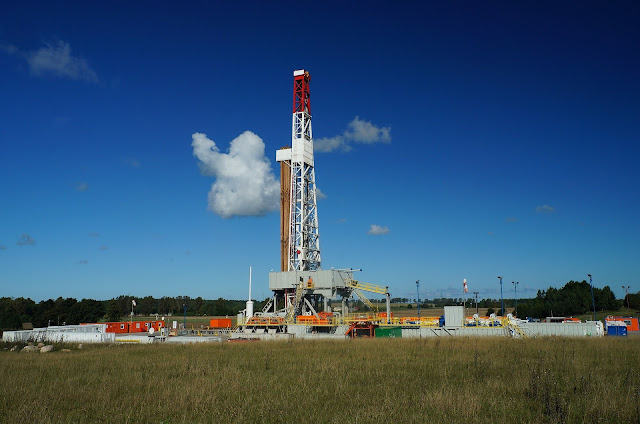Hubert Mathew Sebanc
Hubert Mathew Sebanc - Leader and Innovator in the Oil and Gas Industry
Top Producing Oil Rigs - Hubert Mathew Sebanc
Hubert Mathew Sebanc
Drilling Operations
DominiQ's preferred Kentucky Area of Operations generally consists of four cycles often referred to as phases.
Four Phases of Operations
1. Preliminary Administrative Phase
2. Drilling Phase
3. Completion Phase
4. Final Administration Phase
Preliminary Administrative Phase
KENTUCKY - CURRENT CONDITIONS AND TRENDS
The State of Kentucky is very diverse in its geological structure and layout. Many of the oldest formations in the state occur in central Kentucky where centuries of structural events have caused older rock formations to be lifted and rise in the area known as the Jessamine Dome. The location known as the Jessamine Dome is located along an elongated north-trending structural flexure called the Cincinnati Arch. The area known as the Cincinnati Arch extends from Cincinnati, Ohio, through Cumberland and Monroe Counties in southern Kentucky. This region is called the Cumberland Saddle. This area is unique and often is plentiful in regard to oil.FIND, NEGOTIATE AND LEASEHOLD
Oil Landmen research and locate virtually any available properties in Central Kentucky. This area is historically known to have vast potential for oil production. Negotiations for desired locations are entered into with property (mineral right) owners resulting in the securing of leaseholds for future oil development. Many items that are negotiated include cost per acre, the percentage of overriding royalty interest (the percentage the owner will receive), limitations on location placements, cost of locations and damage to surface expenses etc...MAPPING
Geological and surface maps are used and are an integral component of ideal placement. The vast majority of wells drilled are considered true offsets of past or current producing wells. These maps serve as a tool in developmental drilling as opposed to wildcatting, which is drilling in an area where production has yet to be discovered.SITE SURVEYING
Professional land surveyors survey and stake the selected well site and land. The surveying team ensures that we meet the spacing requirements and are in compliance as outlined by the Kentucky Division of Oil and Gas as well as the rules and regulations thereof. DRILLING PERMITS (per well with Division of Oil and Gas) After all of the following has been completed, the driller then files permits with the Kentucky Division of Oil & Gas (D.O.G.) for authorization to begin drilling on the proposed site location. The approval process is approximately 14 days from the time the driller files for permits, however, the Kentucky Division of Oil & Gas can take longer if special spacing requirements or permitting is needed. Once the driller receives the permit from the D.O.G., drilling can then initially begin.Drilling Phase
COMMENCEMENT of DRILLING OPERATIONS
This process includes the building the pad for the drilling rig, delivery of supplies and drilling equipment required for drilling operations, drilling a hole known as a (RAT HOLE) and setting up the surface pipe. The surface casing is cemented into place thus protecting the water table from any potential contamination. Additional and numerous site-specific steps are also often conducted prior to the actual drilling processes.
WELL DRILLING PROCESS
Drill pipe 'rods', 'sticks', or 'stems', are added piece by piece as the drill bit burrows deeper and deeper into the earth's crust. This drilling process continues until the targeted depth is reached, which is often typically less than 2,200 feet. During drilling operations, the driller will take samples of each well. Often the presence of oil will eliminate or 'kill' the drill dust from the limestone formation (if oil is present) and this begins to blow through what is called the 'blewy' tube. It is at this time when the driller and drilling company make the determination to continue and drill to a deeper level or to stop, take measurements, analysis and evaluate the findings. When this point in the process has been reached based on the findings it is possible that the well deemed a dry hole. In the instance a dry hole is found, they will be plugged and abandoned.Completion Phase (the following only applies to producible wells)
VIDEO INDUCTION
Once a well has been classified as a potential oil producing well, the next step in the process is the completion phase. Once the Completion Phase has commenced, then camera logic performed utilizes a high-tech camera mounted inside the well borehole. This high-tech camera will show conditions deep down-hole and where 'breaks' are in the oil-bearing structure as well as where to apply any solutions or treatments. If a determination cannot be made based on the high-tech video alone, the next step is incorporating a what is known as a duel density gamma ray with induction logs. This technology measures the permeability or potential porosity of a well.
SET UP PULLING UNIT ON LOCATION
A 'Pulling Unit' is used primarily for pulling and placing the production tubing, rods and down-hole pumps into the wellbore at or below the producing formation. The Pulling Unit is set up on drilling site location and it typically remains on site location until the well is placed and is operating in the normal production cycle. If additional procedures are required such as nitrogen fracturing or acid stimulation the pulling unit will remain onsite throughout the duration of those processes.FRACTURING WITH NITROGEN & ACID STIMULATION
If the well drilled is deemed successful and prosperous, nitrogen fracturing and/or acid stimulation may be required or essential to assist in keeping the formation open. This process may also by utilized simply to break open the formation, and allow more fluids to flow through the fracture and small openings into the wellbore. Inside the monitoring vehicle, highly trained engineers determine the precise amounts of nitrogen and/or acid as well as what pressure, and the rate or injection that should be implemented.
FLOW BACK
Upon a successful treatment with acid and/or nitrogen, an evaluation and decision is then made regarding whether the new well may flow naturally or require the assistance of pump-jack for lifting purposes. If a pumping unit is required (in the majority of instances pumping is required), the pulling unit will swab back any acid remaining in the hole.PUMPING UNIT PLACED AT WELL SITE AND PLUMBED IN
The down-hole production assembly and units consist of a production tubing, a down-hole pump and sucker rods that are connected to the pumping unit also referred to as the pump jack. The pump jack is now placed above the wellbore at this stage. The production/tubing pipe allows the pump to pull oil into the tubing in a suction like manner and discharge. Once the down-hole production assembly is attached to the pump jack, the highly trained crew ties in and plumbs the wellhead and pumping tees. This process is necessary for the preparation to finalize the connection of the well to a storage tank assembly. As the pump strokes upward it creates suction force similar to a straw, thereby pulling fluid into the tubing. On the down stroke cycle, the pump will push the fluid to the surface out of the wellhead and into the oil holding tank.ELECTRICITY AT WELL SITE
As part of putting the well 'into production, electricity is brought to the well site though a host of methods. Electricity will be connected to the pump jack motor when it is ready for the connections. If necessary, gasoline generators and motors will temporarily be utilized.TUNING THE WELL
The pumping unit is optimized and set at an estimated rotation speed which is the first stage known as tuning in the well. Tuning the Well is a series processes using different combinations of rotations, timer schedules, and stroke lengths and can take some time to achieve the desired production.STORAGE TANK PLACEMENT
The tank battery is placed near the well site and is connected by a hose and linked directly with the pump jack. The tank batteries receive and store the oil until a load is ready for transport. A field specialist known as the Pumper, gauges the fluid levels daily, checks the status of the field equipment, greases fittings, oils crankcases plus monitors wells and tanks on a consistent basis.PLUGGING REPORTS OR FILE COMPLETION
A completion report or plugging report is filed to notify the Division of Oil & Gas that the drilling phase of the well has been completed and whether or not the well has been confirmed that as a producing well. This report contains information pertaining to whether or not the well was a producing well or whether it has been plugged and abandoned as a dry hole.Final Administration Phase
MANAGING GENERAL PARTNER & ISSUES ASSIGNMENTS OF INTEREST
Administrative staff draws up, executes and records Assignments of Interest in the appropriate courthouse. This process divides the interests of the producing well among the appropriate parties and partners.DIVISION OF INTEREST AND TANK NUMBERS: The storage tanks are numbered and logged by the purchaser for proper division of the oil revenues.
OIL IS FINALLY TRANSPORTED TO A REFINERY
The purchaser picks up the oil from the storage tanks and gauges fluid levels prior to and after draining which provides an accurate measurement of fluids removed from the tank, thereby enabling us to know how much oil was removed the tank. The transport company that removes the oil from the tank batteries then provides a receipt known as a Run Ticket. to the pumper who assists the driver and crosschecks the gauges and measurements before and after the oil was removed.PURCHASER ACCOUNTING PROCEDURES
The purchaser records the tank number, the assignments, and the correct mailing information for revenue distribution and then sends the Managing General Partner (MGP) a division order (DOI), to approve for accuracy. The MGP then endorses the DOI and returns it to the purchaser. Once the oil has been picked up by the transport, it is taken to the purchasers holding facility. The purchaser normally compensates at a rate that is based upon the spot price of Plains Marketing's monthly average. During the accounting procedures, the purchaser will deduct the Overriding Royalty Interest (ORRI), severance tax, shrinkage, transportation fees, condensation and other related fees. In most instances after all of the deductions; revenues which are received typically average around eighty-five percent of the spot price average for that current month.
HUBERT MATHEW SEBANC
One thing is for certain, Hubert Mathew Sebanc is considered a leader in his respective field. Hubert Mathew Sebanc is held in high regard by landowners, investors and his employees. In a recent interview on January 3, 2018, Hubert Mathew Sebanc stated his employees share the same synergy and are looking forward to amazingly successful New Year.










